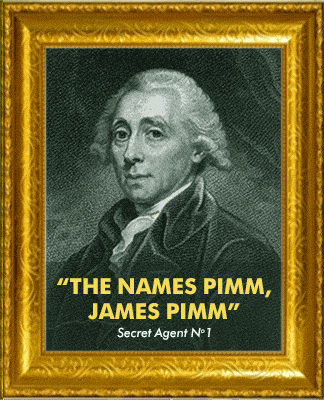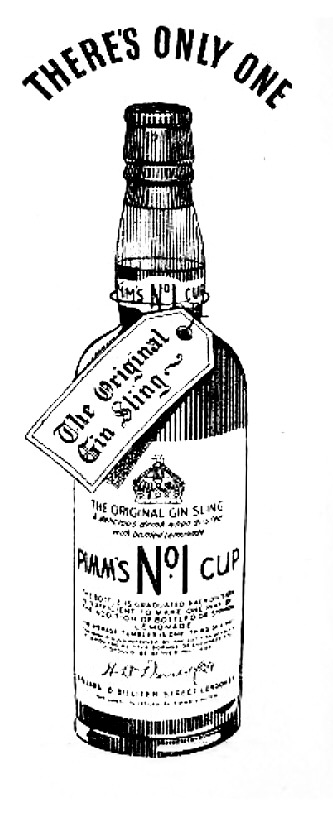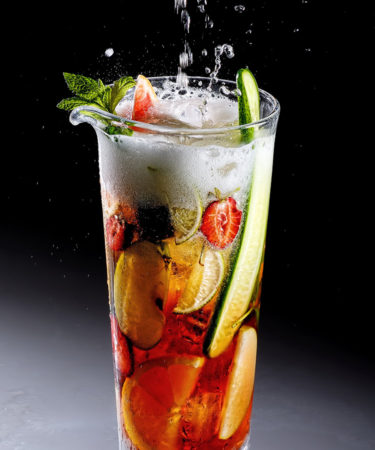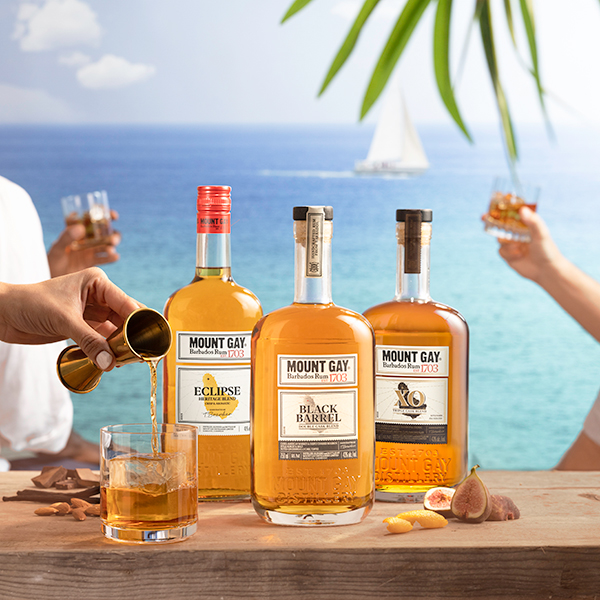There are probably a lot more than 8 things you don’t know about Pimm’s, since most of us Yankees don’t know a ton about Pimm’s in the first place. (Well, some of us do, but we’ll get to that.) Maybe it’s because—unlike the gorgeously austere-looking cocktails of “modern mixology”—a Pimm’s No. 1 Cup looks like the produce section exploded in your drink.
And then there’s the fact that we tend to steer shamelessly towards higher ABV drinks, and Pimm’s clocks in a modest 25%ABV (which you then further cut down with soda or lemonade). But when warm weather hits, there really is nothing more appropriate than kicking back on a stoop or hammock, or wherever you do your kicking back, and sipping a tall, cool Pimm’s Cup.
First we just have to figure out what the hell it is.
There was a dude named Pimm.

Just like there is a dude named Charles Walgreen and a town called Prosecco, there was a dude named Pimm. James Pimm, who ran an oyster bar in mid 19th Century London and sold a gin-based, herbal fruity liqueur as a “health tonic.”
Pimm’s has more to do with oysters than you’d think.
Because you are sane, and Pimm’s tastes like fruit and spice and nothing remotely to do with bivalves. But Pimm’s was originally concocted as a gin-based digestive by a farmer’s son who ran an oyster bar in London. The shellfish capital of the world. Oh wait, just kidding. But yes, Pimms.
The “Cup” aspect of Pimms is very appropriately literal.
The No. 1 in “Pimms No. 1 Cup” isn’t shameless self promotion (“we’re number one, drink our stuff!”). Pimm actually tried other formulas, based on other spirits like rum and brandy, but apparently hit it out of the park the first time with the gin liqueur. In 2005, most of the less successful Pimm’s formulas were phased out, with just No. 3 (made with brandy and known as the Winter Cup) sticking around in addition to No. 1.
Seriously, when Wimbledon hits, so does a temporary craze with Pimm’s.
Basically the official beverage of the tennis tournament—in 2014 fans conumsed 40,000 pints of the stuff in the span of two weeks. Because these were tennis fans, nobody got drunkenly punched.
London loves its Pimms, but so does Louisiana.
It’s not entirely clear how the Pimm’s tradition made its way to New Orleans, but the locals have their own Pimms obsession. About a hundred years after Pimms was invented, it somehow crossed an ocean and landed at The Napoleon House Bar in 1940. However it got there, the light and fruity drink does make a lot of sense for the New Orleans climate—more sense than the delicious but high ABV Sazerac.
The two Pimms recipes in London and Nola are very different.
In England, Pimms is typically made with sparkling lemonade or even lemon lime soda, then garnished with a cottage garden’s worth of summer fruit and fresh herbs. In NOLA, the most popular recipe is Pimms, lemonade, a splash of lemon lime soda, and cucumber. (Ginger ale is also a popular mixer.) For some reason, no heated rivalry exists about this—possibly because everyone’s too relaxed sippin’ on Pimms.
Speaking of recipes, you can muck with a classic.

Or we did, anyway. Even though per this old timey advertisement, “there is only one,” you can do a lot more than one recipe with Pimm’s, as it lends itself to a variety of flavors. (That’s kind of the beauty of creating an herbaceous, fruity liqueur—lots to play with there.) We had a real Englishwoman and friend of the site share her authentic Pimm’s Cup, and then, being Americans, we lovingly bastardized it (even upped the ABV with some bourbon). All of it tasted like summertime delight.
We’re not the only ones who like to play with Pimm’s.
Turns out professional bartenders have been tweaking their Pimm’s Cups for years, adding things like tequila, red wine, and different garnishes (not all in the same cup).

